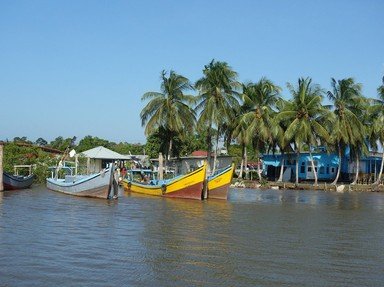Quiz Answer Key and Fun Facts
1. The inner city of Paramaribo, Suriname's capital, was designated a World Heritage site in 2002. What was special about it?
2. Remnants of the colonial period can still be seen across Suriname. For instance, when the country became independent in 1975, the official language remained the same as a country on the North Sea coast. What is the official language of Suriname?
3. The Suriname River flows north through the country and empties out into an ocean near the capital. Which ocean does the Suriname River empty into?
4. Suriname's coastal plain is home to mangroves and a wide range of birds, including the vibrant scarlet ibis. What kind of terrain can be found there?
5. Suriname became home to an enormous nature reserve in 1998. In 2000, it became a World Heritage site due to its pristine condition. What is the name of the nature reserve?
6. With a Latin-based name meaning 'youthful', what is Suriname's highest peak?
7. Much of the native plant life that can be seen is a result of Suriname's climate. Which word best describes the climate in Suriname?
8. Suriname is known for mining an ore used in aluminium production. Which ore can be found there?
9. The beaches of eastern Suriname are the breeding grounds of which marine animal?
10. Suriname is home to some interesting rock formations. What exactly is the landmark known as The Devil's Egg?
Source: Author
AcrylicInk
This quiz was reviewed by FunTrivia editor
agony before going online.
Any errors found in FunTrivia content are routinely corrected through our feedback system.

